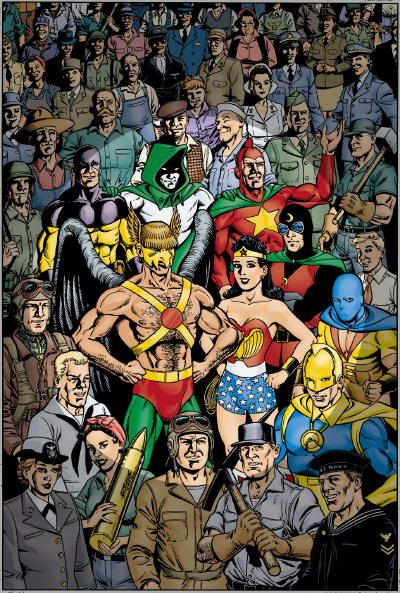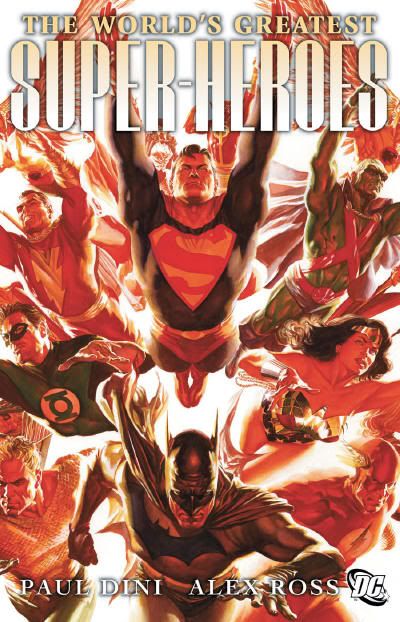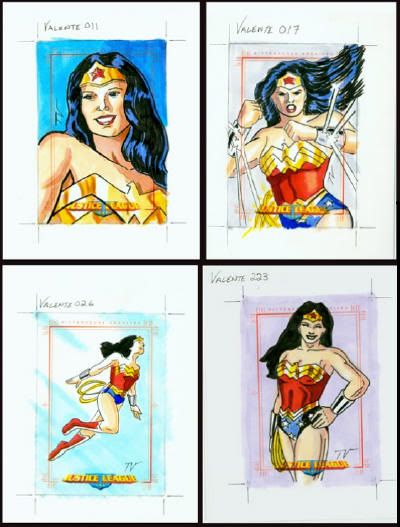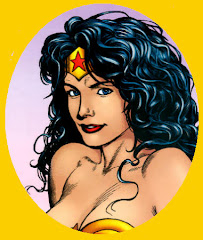
I can't say for certain exactly when I made Helena Wayne's acquaintance, but I do know she left an immediate, lasting impression. I'd been reading comics long enough to know who the major players were, but I hadn't quite wrapped my brain around confusing concepts like the DC Multiverse. I figured the All-Star Squadron were closer to their modern conception as the heroes of World War Two, rather than being from an alternate Earth with a continuity separate from that of the DC Comics I usually read. To have some unfamiliar heroine show up alongside them with the bona fide of being Batman's daughter kind of shook my world view, especially in light of a confusing timetable. It doesn't matter whether my first exposure was a mediocre Solomon Grundy story or a battle with a creepy ninja chick, this Huntress was a mysterious figure with a great name, a cool look, and an intriguing background that I wanted to read more about. Unfortunately, DC Comics didn't get very good newsstand distribution when I was a kid, and the ones featuring the Huntress were even harder to come by. Instead, Huntress was often a focal character of interest amidst a bunch of unknowns in random house ads, group shots, and giveaways like
DC Sampler. That last one was an especially curious treasure, when the closest I came to a comic shop was flea market booths. I didn't know what an Ultra-Humanite was or why that black kid had feathers instead of hair, but whoever was drawing the Huntress amidst those weirdos was good. Beyond that, my only Huntress source was the occasional
Wonder Woman back up found second hand or in a three-pack.

By the mid-80s, I'd outgrown most of the DC titles I could get my hands on. The only issue of
Crisis On Infinite Earths I read in process was the seventh, so I was very aware of the passing of Supergirl, but missed the unremarkable death of the Huntress a few issues later. What I took from the series was that DC had killed off its sillier characters, that only one version of a given hero would continue to exist, and that their icons would now be handled in the contemporary Marvel manner. The hottest creators in comics were given essentially a blank slate with DC's biggest heroes, so I was all over that. No one bothered with the Huntress until 1989, when a revised version of the character was launched in her own series. I believe by that point I'd learned the old Huntress had been the Earth-2 Catwoman's daughter, but it wasn't the "real" version, which made the heroine seem irrelevant. Further, with Batman as your father, where do you go? It would seem to unfairly and unfavorably compare the character, her cast, and her stories to the entire Batman mythos. When I read the new origin of the rechristened Helena Bertinelli, which cast her as the sole survival of a mob family massacre who trained from childhood for revenge, I felt at least the Batman baggage was lifted. The backstory seemed derivative though, and the series failed to hold my interest, so Huntress went back to being a nostalgia character I read only in guest appearances.

After her series was canceled, the Huntress went unemployed for several years, until writer Chuck Dixon began using her in his Batman Family books. Jim Lee clone Travis Charest drew some eye-catching covers with the heroine, but as with her solo series, the interiors left a lot to be desired. Thanks in part to her lack of a costume material, I noticed the Huntress' uniform had been tweaked repeatedly over the years. It never had a particularly strong design, but so long as essential elements like the cape, the purple coloring, the long loose hair, and most especially the crossbow remained in place, the rest didn't matter especially much. In fact, it made a lot more sense to have a variety of costumes at the Huntress' disposal, and helped balance out the ridiculousness of an urban vigilante wielding a medieval weapon. I also recognized there had to be something more to my interest in the Huntress than fond childhood memories. The character projected confidence, mystique and attitude that DC heroines desperately needed.

Unfortunately, Dixon took it upon himself to saddle the Huntress with a pretty serious psychosis. Rather than considering the character as an independent entity, Dixon used her tendency toward unnecessary force to demonstrate the acceptable limits within the Batman Family, and how her willingness to induce serious bodily injury exempted her from inclusion. Further, it was teased that she might occasionally indulge in homicide off-panel, casting her as at best an anti-heroine and at worst a ticking time bomb. Next came a troubling spotlight mini-series whose script aped Frank Miller's
Elekta: Assassin and whose art imitated Frank Miller's
Sin City, neither to appealing effect. This characterization held up throughout the '90s, seeing Grant Morrison include Huntress in his
JLA as an undesirable Batman substitute, whom the Dark Knight would himself "fire" from the team after a year.

This is not to say that Chuck Dixon's influence was entirely negative. Over the course of the 1990s, the Huntress overtly embraced her ethnic and religious identities as an Italian Catholic, giving a real world depth to the character often considered taboo for bigger names. The Huntress incorporated a large crucifix into her wardrobe, and began covering up all that once vulnerable flesh in her most practical and dignified costume. An intriguing dichotomy developed within the character, contrasting her faith and role as a school teacher with her violent actions. Artists also tended to draw the character with a lean musculature, making her visibly more formidable. Also, it was during these years that I went back and read more of her earlier solo stories and adventures as a member of
Infinity Inc. While I thought it a shame to trade Helena Wayne's more lucrative law degree, social consciousness, and access to power for an emotionally damaged substitute teacher, Helena Bertinelli had a lot more personality and complexity.

A real turning point came with the arrival of Devin Grayson as a writer for the Batman books. Grayson embraced the character, and rejected the more unsavory elements of Dixon's characterization, much to his chagrin. DC has a tendency toward treating their non-white and female characters delicately, often pigeonholing them in sanitized roles. As a woman herself, Grayson gifted Helena with dimensions denied her for decades. In a co-starring mini-series, Huntress and Nightwing's relationship shifted from the chaste fraternity of the Pre-Crisis years to uncomfortable sex buddies. Rather than being simply an untrusted rogue element, the Huntress was allowed to mock and otherwise criticize the Batman Family from the outside in. Perhaps in reaction to this, the Huntress was pushed out of her ghetto position in Gotham of the previous decade toward the greater DC Universe from which she was truly spawned as a member of the Justice Society of America. This would be no return to abandoned form, however, as Huntress bypassed that austere group to become part of the girl power cliche
Birds of Pray.

I spent twenty years trying to like the Black Canary, but despite her being a nice enough character appearing in solid stories, there's something essential missing from her to my taste. I read Chuck Dixon's work on the character off and on, but it took the arrival of the Huntress and another female writer, Gail Simone, to really turn me on to
BoP. Once again, the Huntress was an agitator, but given sarcastic humor, legitimate sensuality and a recognition of her own questionable judgment that made the character sing. Simone continued this interpretation into animation, as the tough, sexy, charismatic Huntress appeared on
Justice League Unlimited. There were some rough patches along the way, like a fairly terrible
Birds of Prey television series, but I feel like the Huntress has finally begun living up to the potential and appeal I've always seen in the character. To contrast against Black Canary, I've suffered through a lot of bad choices made with the Huntress, but I could never be completely dissuaded from being her fan.

















































